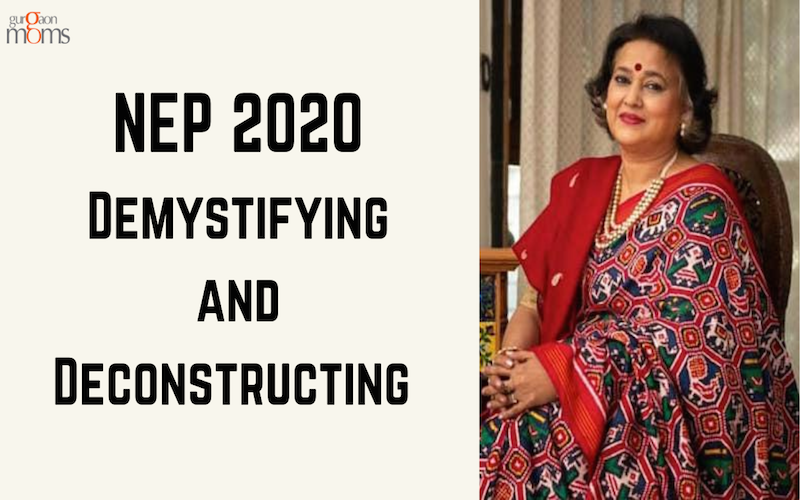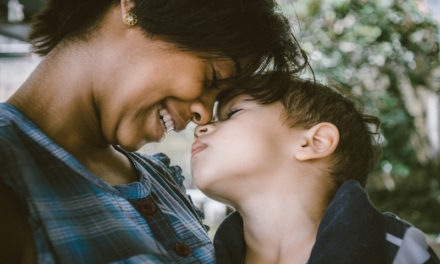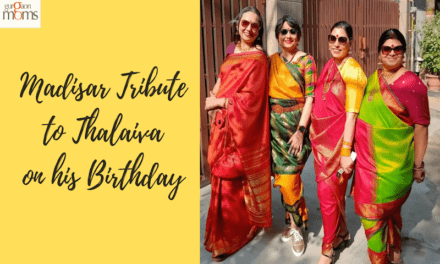The New Education Policy is ready. The salient features have been in the Whatsapp loop for the past 24 hours. It seems like a lot of jargon for the layperson but what affects all of us is what I will try and deconstruct here.
I’ll begin by telling the reader that it is, all in all, a very positive step in the right direction and no one at any level should have any misgivings or any worries about what it means, what it implies or what it stands for.
The first thing that the NEP has done is change the 10 +2 pattern which was under the ambit of CBSE into a new pattern which says 5+3+3+4 and this will be fifteen years after class I.
It just means that the years before class I have also been brought under the umbrella of NCERT and CBSE. This itself is a very positive step because early childhood care and education were pretty nebulous and quite ambiguous with schools not really having any framework or pattern to follow. We did know what is expected for a child for class I but prior to that everyone was left to decide for themselves.
So one of the most optimal aims is to construct a proper framework in the domains of physical and motor development, cognitive development, social-emotional ethical development, and cultural and artistic development within the early years of education. Within these early years, there is a plan to strengthen the Anganwaadis and all the Bal Bhavans, the idea is to teach the children through the rich traditions of India, the heritage of India, the folklores, the folk tales, and the traditional games which in their own way become the best teaching tools for children up to the age of 7. So from age 3 to age 7 i.e. Pre Nursery, Nursery, Prep, I and II come under the first 5 years which is being discussed.
The planning and implementation of the ECCE i.e Early Childhood Care and Education will be carried out jointly by the Ministry of Education, Ministry for Women and Child Development, Ministry for Health and Family Welfare, Ministry for Travel Affairs.
I think this whole coming together in collaboration is going to be quite a winner in terms of bringing out the best kind of plan for the early years.
The NEP also talks about building literacy numeracy which is a very urgent necessity, not just through schools but through DIKSHA portal, through peer tutoring, volunteer activities, expansion of public libraries, and through the community. It also seeks to curtail dropout rates, track students, and improve school infrastructure so that whatever was the reason for students to drop out don’t hold true anymore.
Possibly the most positive item within the NEP is the reiteration on the emphasis on learning outcomes and not the content.
There is a suggestion to involve the community which is retired teachers, professors, doctors, scientists who can come in as volunteers to teach children at various levels.
The whole idea is that the content should not be the most important but what the child learns out of that content, how is it going to enhance his or her personality is of prime importance. This obviously means that rote learning will be replaced by real understanding and application and hopefully, that will lead to the more holistic development of the child and not just produce children who mug up and regurgitate whatever they have learnt.
The aim of education therefore finally becomes in articulated forms, not just content delivery and knowledge but character building and honing of 21st-century skills especially those of communication, collaboration, creative thinking and critical thinking. Obviously this will mean a deduction of curricular content and enhance essential learning and critical thinking. Content should focus on application and problem solving and obviously then the teaching-learning process will have to be more interactive.
An important component of the NEP is the thrust on experiential learning which is hands-on learning. Children learn by doing, children learn by experiencing and not just by reading. Within this, there is a strong emphasis on Art Integration in all the subjects across from class I to class XII and integration of Sports Education as well.
The pedagogy will emphasize on storytelling, anecdotes, and therefore classroom transactions shift to competency-based teaching and learning and not so much learning content. Within this assessment tools will have to be aligned to learning outcomes as well.
Another very positive move is that there will be no hard separations between what was existing right now. There was vocational academic or the demarcation between Humanities, Commerce, and Science or the strong separation between curricular and co-curricular and academic. There is a plan to give flexibility to the students to study any subjects that they please at the +4 stage There will possibly be some guidelines as to how many subjects a child will be expected to study, how many would be based on the arts, how many would be based on the sciences, how many would be vocational, how many would be co-curricular but there is a certain flexibility that will be given while incorporating Physical Education, Arts and Vocational Studies within the school curriculum.
Another unique feature of the NEP is the concept of multilingualism where there is a suggestion that wherever possible the medium of instruction should be the mother tongue or local language in class V or possibly in class VIII. There is a plan to make available high-quality textbooks in the regional languages as well. This is open to interpretation because in the cosmopolitan areas where there would be children of multiple languages in a particular class it may not be possible to pick up a local language or a mother tongue in which case some flexibility would be given to schools within those areas. But within the states, if a child wishes to be taught Science and Social Science in the local language that provision has now been made available.
Within the curriculum, there will also be an integration of essential subjects, skills, and capacities where the emphasis will be laid on scientific temper, aesthetics, communication, fitness, creativity, and even contemporary subjects like Artificial Intelligence, Design Thinking, Organic living, Global Citizenship education will be introduced and strengthened. There is also a plan to put greater emphasis on Math but more through experiential and hands-on activities and activities involving coding will be introduced at the middle school stage.
The entire national curriculum framework for school education will be undertaken by the NCERT. The national textbooks with local flavour will be prepared by states based on the national curriculum framework for school education. Along with all this, there will be an effort to reduce the weight of school bags.
Across all the levels 5+3+3+4 there is going to be an emphasis on learning about India, knowledge of India will be at the centre of the entire curricular, where moral-ethical values will be taught through themes from Indian heritage. The Indian Constitution would become essential reading for all students, there will be training in health, preventive and mental health, nutrition, hygiene, disaster response as well as awareness on substance abuse. These will now be part of the curriculum and will be given proper shape and a proper structure. It will not be left to schools to decide how much they want to do which part.
With so much change in pedagogy, there will obviously be a transformation of the assessment pattern as well. So all those who think that the Boards for 10 and 12 will disappear I’m sorry to disappoint you they are not going anywhere but henceforth Board exams for classes 10 and 12 will be assessing competencies, not just rote learning. The school assessments will receive separate guidelines where there will be an introduction of 360 degrees assessment and evaluation for students which will include self-assessment, peer assessment, and teacher assessment.
The entire process of teacher training, teacher recruitment, and continuous professional development will be given a new structure, a new form where the entire teaching-learning process through the B.Ed. will also be changed. B. Ed. may not now be a separate course it may be integrated within the multidisciplinary colleges and universities. The B.Ed. course will now be a 4-year course and those who have done graduation may have to do a 2-year B.Ed. This is going to be done by the year 2030. Teachers so trained will also be trained in inclusive education in psychology and should be able to handle the 21st-century classroom.
There is a very clear cut plan for equitable and inclusive education within the learning for all paradigms with the focus on socio-economically disadvantaged groups, scheduled castes, scheduled tribes, transgenders, and children with special needs. There may also be setting up of SEZs which is Special Education Zones to remove disparities and provide the best education to all the children of the country.
Such a sea change cannot possibly happen without mentoring, hand-holding, and collaboration so there is a suggestion for efficient resourcing and governance through school clusters and school complexes by 2025.
There is a suggestion that there could be a twinning of public and private schools. A starting has already been made by CBSE a year ago when the Hubs of learning were set up across the country. The department of school education will also be responsible for overall monitoring and policymaking for continuous improvement there will be standard-setting and aggradations. The School Quality Assessment and Aggradations Framework (SQAAF) will be developed by SCERT in consultation with all stakeholders.
Perhaps, the most revolutionary and exciting idea has been to incorporate vocational education across all classes ie. from class I to class XII with a view to let the children develop some vocational training along with academic excellence. So, there is a hope that by 2025 almost 50% of learners will have exposure to vocational education.
In any academic calendar year, there will be a 10-day internship with vocational experts which will be considered bagless days, the children will not come to school but they will do 10-day internships. There will also be online vocational courses available for those who wish to pursue these and perhaps the last and the most forward-thinking idea has been of to introduce adult education and the concept of lifelong learning wherein schools, colleges, and other institutions would be open after their working hours for adults who wish to continue their education, who wish to enhance their skills or who wish to study a little more. So that every institution is used optimally.
I think all in all the entire NEP is very forward-thinking, very progressive, very utopian ideal, one which is very achievable if everyone works together.
Finally, the idea of collaboration will replace the idea of competition where school clusters, Sahodaya complexes, neighbourhood schools will come together to work together because not everybody will be able to do the best by themselves for their students if they were to live in isolation. So there could be schools that could have expertise in one particular vocational training and thus neighbourhood schools could all hone in over there for that, another school could have expertise in another vocational training and everyone can share their resources and come together in the best possible way.
Possibly the best news is also for an educator that we will have by the year 2030 100% gross enrolment ratio which is every child will be in school.
That is the only way we can hope for some improvement in the socio-economic-political set up of our country India and will hopefully lead to the India of our dreams.
This article has been authored by
Aditi Misra -Director Principal: DPS, Sector 45, Gurgaon






